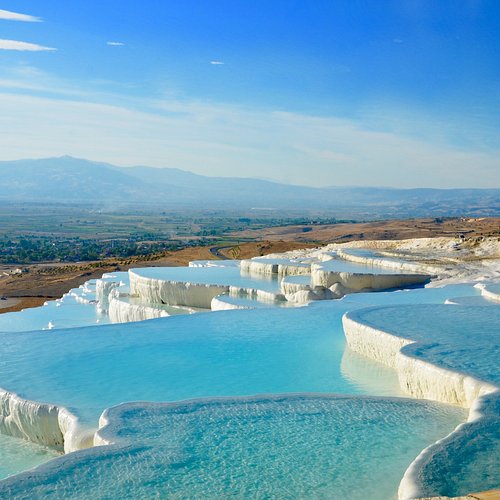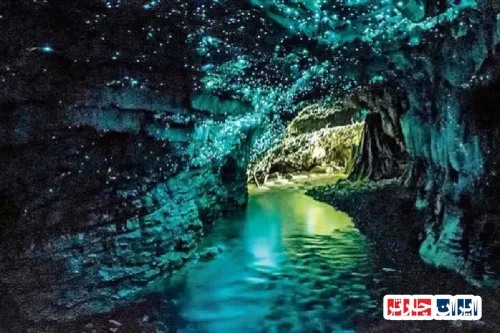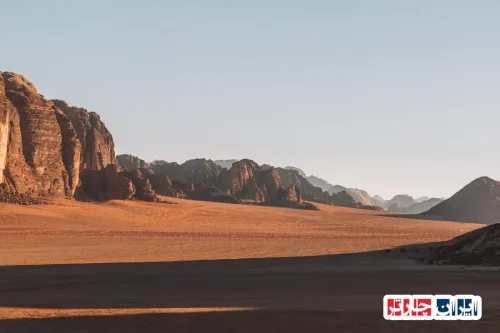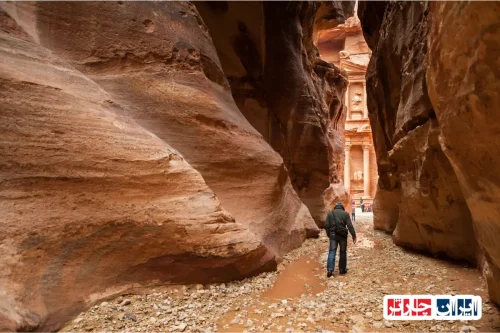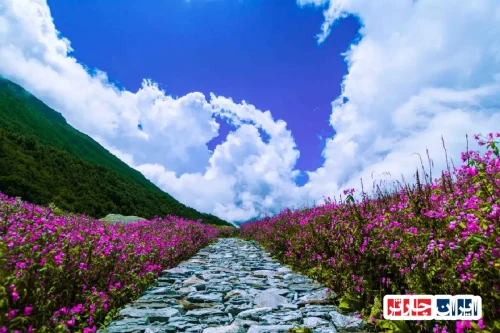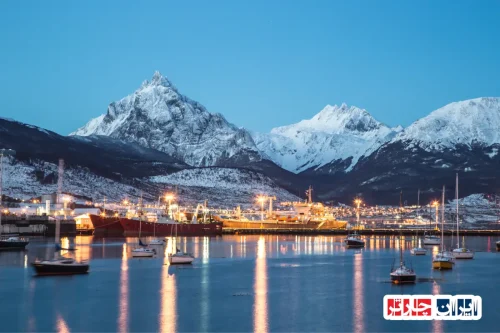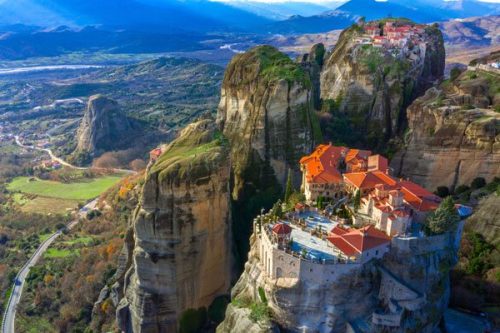Discover the Healing Wonders of Pamukkale Thermal Pools in Denizli Province Turkey
Experience the unparalleled natural beauty and therapeutic benefits of the Pamukkale Thermal Pools-Iran Charter located in Denizli Province Turkey. These unique mineral-rich hot springs have been renowned for centuries for their healing properties and stunning terraces. Visitors from around the world flock to this extraordinary destination to enjoy the warm waters that are believed to alleviate joint pain, improve circulation, and promote overall well-being. The mesmerizing white travertine terraces, formed over thousands of years by mineral deposits from the thermal waters, create a surreal landscape that combines natural artistry with health benefits. Whether you’re seeking relaxation, health improvements, or simply awe-inspiring scenery, the Pamukkale Thermal Pools in Denizli Province Turkey offer an unforgettable experience that blends nature, history, and wellness seamlessly. Don’t miss the chance to immerse yourself in these legendary thermal waters, which continue to attract travelers looking for natural cures and breathtaking vistas. For more information and booking, visit Irancharter’s dedicated page on this remarkable site.
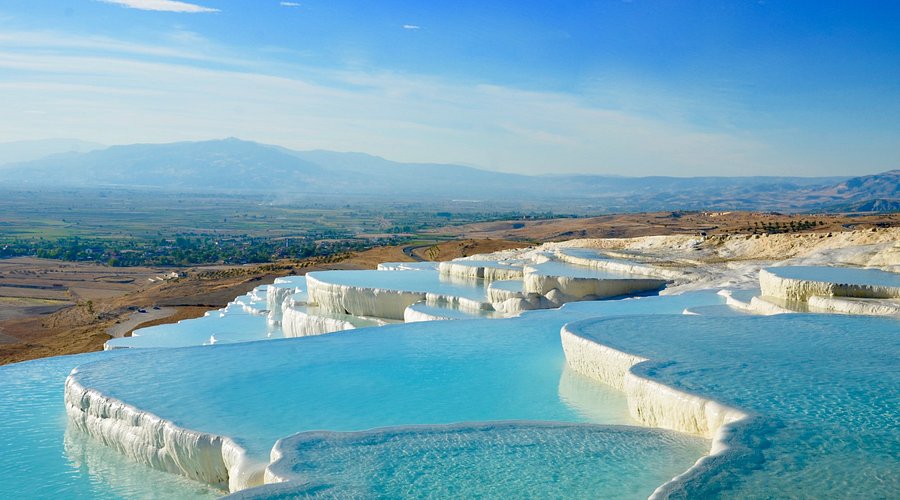
Rich History and Ancient Origins of Pamukkale Thermal Pools in Denizli Province Turkey
The Pamukkale Thermal Pools in Denizli Province Turkey boast a history spanning thousands of years, serving as a significant healing and wellness destination since ancient times. Historically recognized as a sacred site, these thermal waters have been used for therapeutic purposes by civilizations including the Greeks and Romans. Archaeological findings and historical records reveal that the area has long been regarded as a place of healing and spiritual significance, attracting visitors seeking health benefits and relaxation.
During the Middle Ages and under Roman influence, Pamukkale was renowned as a prominent health resort, drawing people from across the region to benefit from its mineral-rich thermal waters. Over centuries, the site has undergone various changes but has consistently maintained its reputation as a natural and therapeutic marvel. Today, it continues to be a leading destination for health tourism, blending its rich historical legacy with modern wellness practices.
The development of scientific research has further validated the healing properties of Pamukkale’s waters. Recognized as a UNESCO World Heritage site, the preservation of this natural wonder is of utmost importance. The deep-rooted history and longevity of the Pamukkale Thermal Pools highlight their cultural and medicinal significance across different eras, making them a priceless heritage for humanity.
The Science Behind the Breathtaking White Terraces of Pamukkale in Denizli Province Turkey
The stunning landscapes of Pamukkale in Denizli Province Turkey are the result of complex natural and geological processes that have taken place over millions of years. The thermal waters, rich in calcium carbonate, emerge from underground springs and, through evaporation and mineral deposition, create the iconic white terraces and pools. This natural process has formed the step-like structures that define the region’s unique scenery.
Over time, mineral-rich sediments have accumulated, forming natural waterfalls, mineral pools, and calcite columns. These formations, characterized by their brilliant white color and distinctive shapes, are considered one of the natural wonders of the world. Scientific studies show that chemical and physical processes, occurring over millions of years, have crafted these extraordinary landscapes, blending geology with natural artistry.
Research indicates that the interaction of hot mineral waters with environmental factors such as temperature fluctuations and pressure variations has played a crucial role in shaping these formations. The region exemplifies geological phenomena where natural chemistry and climate have collaborated to produce a mesmerizing scenery. Ongoing scientific investigations continue to uncover the secrets behind these remarkable formations, emphasizing their importance as a natural laboratory and heritage site.
Health Benefits and Therapeutic Effects of Pamukkale Thermal Pools on Body and Mind
The mineral-rich thermal waters of Pamukkale in Denizli Province Turkey offer exceptional therapeutic benefits that promote physical and mental well-being. These waters contain essential minerals like calcium, magnesium, and bicarbonate, which are effective in treating joint, skin, and respiratory conditions. Regular immersion in these thermal pools can alleviate joint pain, reduce muscle stiffness, and enhance overall health.
Beyond physical healing, the tranquil environment and scenic beauty of Pamukkale significantly boost mental health. The natural surroundings and calming waters help reduce stress, anxiety, and fatigue. Scientific evidence supports that mineral water therapy combined with the serene landscape can improve mood, promote relaxation, and foster mental clarity.
Overall, the therapeutic effects of Pamukkale’s thermal pools include anti-inflammatory properties, improved blood circulation, immune system support, and fatigue relief. These benefits have established the area as a natural health hub, offering an alternative to conventional medical treatments. Visitors often leave feeling revitalized physically and emotionally, making Pamukkale a premier destination for holistic wellness and natural healing.
Natural Architecture and Formation of the Travertine Terraces in Pamukkale Turkey
The natural architecture of Pamukkale in Denizli Province Turkey results from geological and chemical processes that have been ongoing for millions of years. Hot mineral waters from underground springs flow over the surface, depositing calcium carbonate as they evaporate. This mineral deposition creates the characteristic white terraces and pools that define the region’s landscape.
The formation of these terraces involves the continuous layering of calcite deposits, which over time develop into natural pools, waterfalls, and calcite columns. Temperature changes, evaporation rates, and mineral saturation levels influence the shape and size of these formations. The interplay of geological factors has crafted a stunning natural sculpture that resembles a cascading white paradise.
Understanding the formation process is vital for conservation efforts. Recognizing how natural elements contribute to the terraces’ development helps in implementing protective measures against erosion and human impact. The unique natural architecture of Pamukkale exemplifies the power of geological processes and highlights the importance of preserving this extraordinary landscape for future generations.
Historical and Archaeological Attractions Near Pamukkale: The Ancient City of Hierapolis
Adjacent to the Pamukkale Thermal Pools lies the ancient city of Hierapolis, a UNESCO World Heritage site that offers a glimpse into the region’s rich past. Built in the 2nd century BC, Hierapolis features well-preserved ruins including temples, theaters, baths, and necropolises. These archaeological remains reflect the city’s historical significance as a center of healing and culture.
Visitors can explore structures such as the Temple of Apollo, ancient baths, and the Roman theater, immersing themselves in the history of civilizations that thrived here. The combination of natural beauty and archaeological heritage creates a captivating experience, blending history with nature’s artistry. Walking through these ruins transports visitors to a bygone era of grandeur and spiritual significance.
Touring Hierapolis alongside Pamukkale’s natural wonders provides a comprehensive cultural and historical journey. Protecting and maintaining these sites is essential for preserving their legacy. The integration of natural landscapes with archaeological treasures makes this area a unique destination for history enthusiasts and nature lovers alike.
Optimal Seasons for Visiting Pamukkale in Denizli Province Turkey
The best times to visit Pamukkale in Denizli Province Turkey are during spring and autumn when the weather is mild and pleasant. During these seasons, temperatures are comfortable for outdoor activities, allowing visitors to fully enjoy the thermal pools and scenic views without the extremes of summer heat or winter cold. Fewer tourists also mean a more peaceful experience.
Summer visits are possible with proper planning, such as early morning or late afternoon excursions to avoid the intense heat. The winter season offers a different perspective, with cooler temperatures and sometimes snow-covered terraces, creating a stunning contrast. However, accessibility to some areas may be limited during colder months.
Choosing the right season enhances the overall experience, whether it’s the vibrant blooms of spring or the tranquil ambiance of autumn. Planning your trip during these optimal periods ensures maximum comfort, safety, and enjoyment of Pamukkale’s natural and historical attractions.
Essential Tips for Enjoying Pamukkale’s Thermal Pools Safely and Comfortably
To make the most of your visit to Pamukkale’s thermal pools, wear comfortable, waterproof footwear to protect your feet from the mineral deposits and slippery surfaces. Respect the site’s rules, such as avoiding the use of soaps or chemicals in the pools, to preserve the natural environment and mineral integrity.
Limit your time in the hot waters to prevent overheating or dehydration. Hydrate well and take breaks to rest and cool down. After bathing, dry your skin thoroughly and avoid contact with the delicate travertine formations to prevent damage. Use sunscreen and protective clothing if you plan to stay outdoors for extended periods.
Follow local guidelines and safety instructions to ensure a safe and enjoyable experience. Carry essentials like water, a hat, and a towel. Being mindful of your health and the environment helps maintain the beauty and sustainability of Pamukkale for future visitors, ensuring a memorable and responsible visit.
Conservation and Sustainable Management of Pamukkale’s Natural and Cultural Heritage
Protecting Pamukkale’s natural beauty and archaeological significance requires responsible tourism practices and effective management. Implementing visitor limits, designated pathways, and educational programs can reduce environmental impact and prevent erosion of the travertine terraces. Raising awareness about the importance of preserving this UNESCO site encourages visitors to act responsibly.
Continuous monitoring and maintenance are essential to safeguard the site’s integrity. Local authorities, conservation organizations, and visitors must collaborate to enforce regulations, such as prohibiting graffiti, littering, and unauthorized construction. Sustainable tourism ensures that Pamukkale remains a pristine natural wonder and a cultural treasure for generations to come.
Educating tourists about the geological and historical importance of Pamukkale fosters a sense of stewardship. By adopting eco-friendly practices and supporting conservation initiatives, everyone can contribute to preserving this unique landscape’s beauty and significance, ensuring its legacy endures for future explorers and nature lovers.
Comparing Pamukkale with Other World’s Natural Thermal Regions
Compared to other famous thermal regions worldwide, Pamukkale stands out due to its distinctive white travertine terraces and historical context. While places like Yellowstone or Blue Lagoon offer geothermal features, Pamukkale’s unique formation of cascading mineral pools and its integration with ancient ruins make it unparalleled. Its natural beauty combined with cultural heritage elevates its global significance.
Other thermal sites may feature geysers or hot springs, but few can match the surreal white terraces formed by calcium carbonate deposits. The visual impact of Pamukkale’s terraces, along with its historical connection to ancient civilizations, creates a compelling destination that blends natural wonder with cultural richness.
Preserving Pamukkale’s unique features requires careful management, especially given its popularity. Its status as a UNESCO World Heritage site highlights its global importance. Comparing it with other thermal regions underscores its exceptional status and the need for ongoing conservation efforts to maintain its distinctive character for future generations.
Memorable Visitor Experiences and Fascinating Legends of Pamukkale Thermal Pools
Visitors to Pamukkale often share unforgettable experiences of relaxation and awe at the site’s natural beauty. Many recount feelings of rejuvenation after soaking in the mineral-rich waters, coupled with the breathtaking views of white terraces and lush surroundings. These personal stories highlight the therapeutic and aesthetic appeal of Pamukkale.
Local legends and stories add a mystical dimension to the site’s allure. It is believed that the thermal waters possess healing powers, capable of curing ailments and restoring vitality. Such tales have been passed down through generations, enhancing the spiritual and cultural significance of Pamukkale as a sacred healing place.
These narratives, combined with the natural spectacle, make Pamukkale a place of inspiration and tranquility. Preserving these stories and experiences is vital for maintaining the cultural fabric of the site. Visitors leave with not only memories of beauty and health benefits but also a sense of connection to the legends and history that make Pamukkale truly extraordinary.
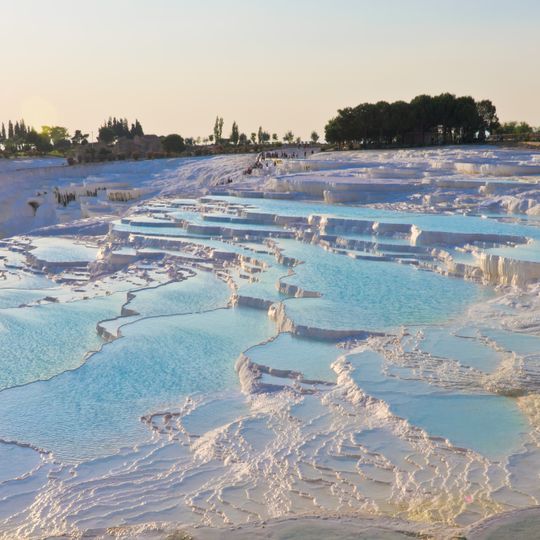
Frequently Asked Questions About Pamukkale Thermal Pools in Denizli, Turkey
- What is the historical significance of Pamukkale?
- Pamukkale has a rich history dating back thousands of years. It has been recognized as a sacred healing site by ancient civilizations such as the Greeks and Romans. Archaeological findings reveal that the area was used for therapeutic and spiritual purposes, attracting visitors seeking health benefits and relaxation. During the Middle Ages, it was renowned as a prominent health resort, maintaining its reputation for healing properties through centuries.
- How are the white terraces of Pamukkale formed?
- The stunning terraces are created by natural geological processes over millions of years. Hot mineral-rich waters, mainly calcium carbonate, emerge from underground springs. As the water flows over the surface and evaporates, it deposits calcium carbonate, gradually building the characteristic white terraces and pools. The continuous layering of calcite deposits results in the unique step-like landscape seen today.
- What are the health benefits of bathing in Pamukkale’s thermal waters?
- The mineral-rich waters contain calcium, magnesium, and bicarbonate, which can help alleviate joint pain, skin conditions, and respiratory issues. Regular immersion promotes blood circulation, reduces inflammation, and supports immune health. Additionally, the tranquil environment helps reduce stress and mental fatigue, making it beneficial for both body and mind.
- What is the significance of Hierapolis near Pamukkale?
- Hierapolis is an ancient city built in the 2nd century BC, located adjacent to Pamukkale. It features well-preserved ruins such as temples, theaters, baths, and necropolises. Recognized as a UNESCO World Heritage site, Hierapolis offers visitors a glimpse into the region’s rich history as a center of healing and culture. Exploring these archaeological sites provides a deeper understanding of the area’s historical importance.
- When is the best time to visit Pamukkale?
- The ideal seasons are spring and autumn, when the weather is mild and comfortable for outdoor activities. During these times, visitors can enjoy the thermal pools and scenic views with fewer crowds. Summer is suitable with early morning or late afternoon visits to avoid heat, while winter offers a unique experience with cooler temperatures and possibly snow-covered terraces, though some areas might be less accessible.
- Are there safety tips for enjoying Pamukkale’s pools?
- Yes. Wear waterproof footwear to prevent slipping and protect your feet from mineral deposits. Limit your time in hot waters to avoid dehydration, and stay hydrated. Avoid using soaps or chemicals in the pools to preserve their natural mineral content. After bathing, dry your skin thoroughly and avoid contact with delicate formations to prevent damage. Follow local guidelines for a safe visit.
- How is the natural architecture of Pamukkale maintained?
- The formation results from ongoing geological and chemical processes, with calcium carbonate deposits building up over time. Conservation efforts include regulating visitor numbers, creating designated pathways, and educating tourists about preserving the site. Protecting the terraces from erosion and human impact is essential to sustain their natural beauty for future generations.
- What makes Pamukkale unique compared to other thermal regions worldwide?
- Unlike other geothermal sites, Pamukkale’s white travertine terraces and historical context set it apart. While places like Yellowstone feature geysers, Pamukkale’s cascading mineral pools combined with ancient ruins create a distinctive landscape. Its natural beauty and cultural heritage make it a one-of-a-kind destination that blends natural wonder with historical significance.
- What legends are associated with Pamukkale?
- Many visitors share stories of rejuvenation and healing after bathing in the thermal waters. Local legends speak of the waters’ powers to cure ailments and restore vitality, adding a mystical aura to the site. These stories have been passed down through generations, enhancing Pamukkale’s spiritual and cultural importance as a sacred healing place.
- How can visitors help in conserving Pamukkale?
- Tourists can contribute by following site rules, avoiding littering, and refraining from damaging the formations. Supporting conservation initiatives and respecting the natural environment ensures the site remains pristine. Educating oneself about the importance of preservation and practicing eco-friendly behavior helps maintain Pamukkale’s beauty for future visitors.
- What are the nearby attractions worth visiting?
- Besides Pamukkale, the ancient city of Hierapolis offers archaeological treasures like temples and theaters. The region also features natural landscapes, caves, and other historical sites that enrich the visitor experience. Combining these attractions provides a comprehensive cultural and natural exploration of the area.
- Can I visit Pamukkale year-round?
- Yes, Pamukkale is accessible throughout the year. Spring and autumn offer the most comfortable weather, while summer can be enjoyed early mornings or late afternoons. Winter provides a different scenic view, sometimes with snow, but some areas may have limited access due to weather conditions.
- What should I bring for a comfortable visit?
- Bring waterproof footwear, a hat, sunscreen, and a towel. Hydrate well and wear comfortable clothing suitable for outdoor activities. If planning to stay long, consider carrying water, snacks, and a camera to capture the stunning scenery. Following these tips ensures a pleasant and safe experience.
- How does Pamukkale compare with other UNESCO World Heritage sites?
- Pamukkale’s unique combination of natural mineral terraces and archaeological sites makes it stand out among UNESCO sites. Its surreal white formations and historical significance as a healing center give it a distinctive status. Preservation efforts are crucial to maintain its exceptional value for future generations.
